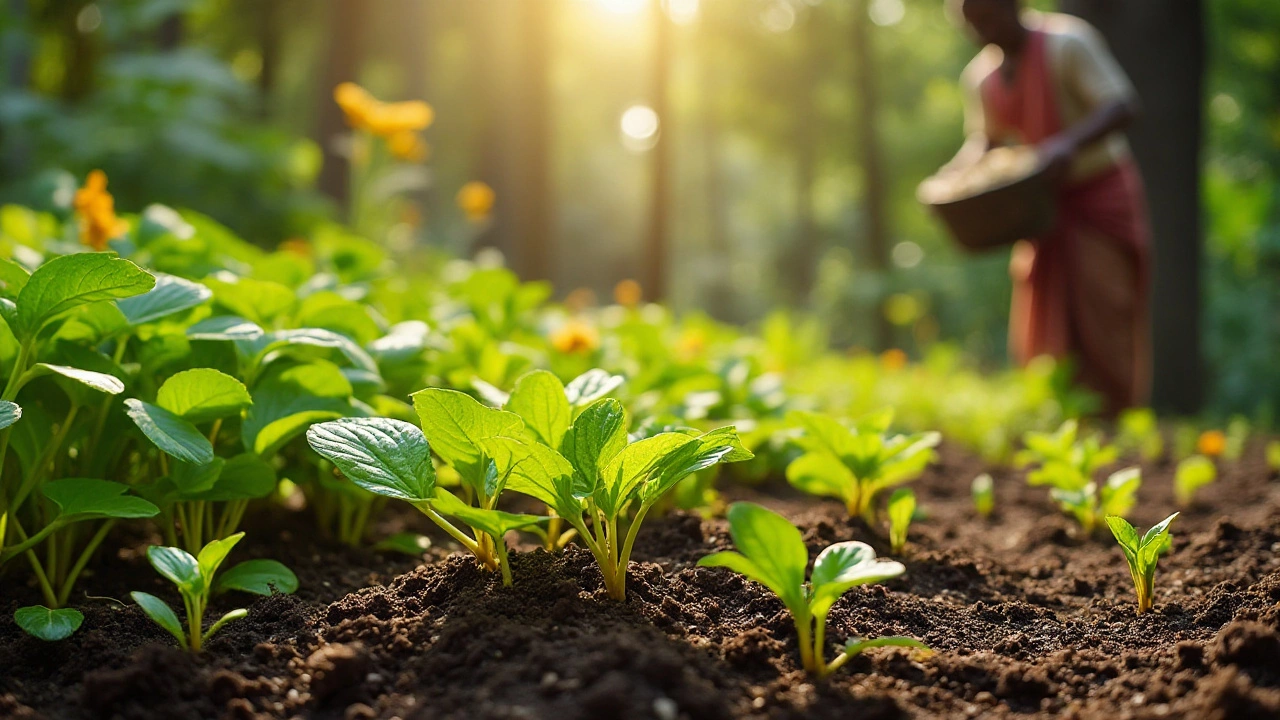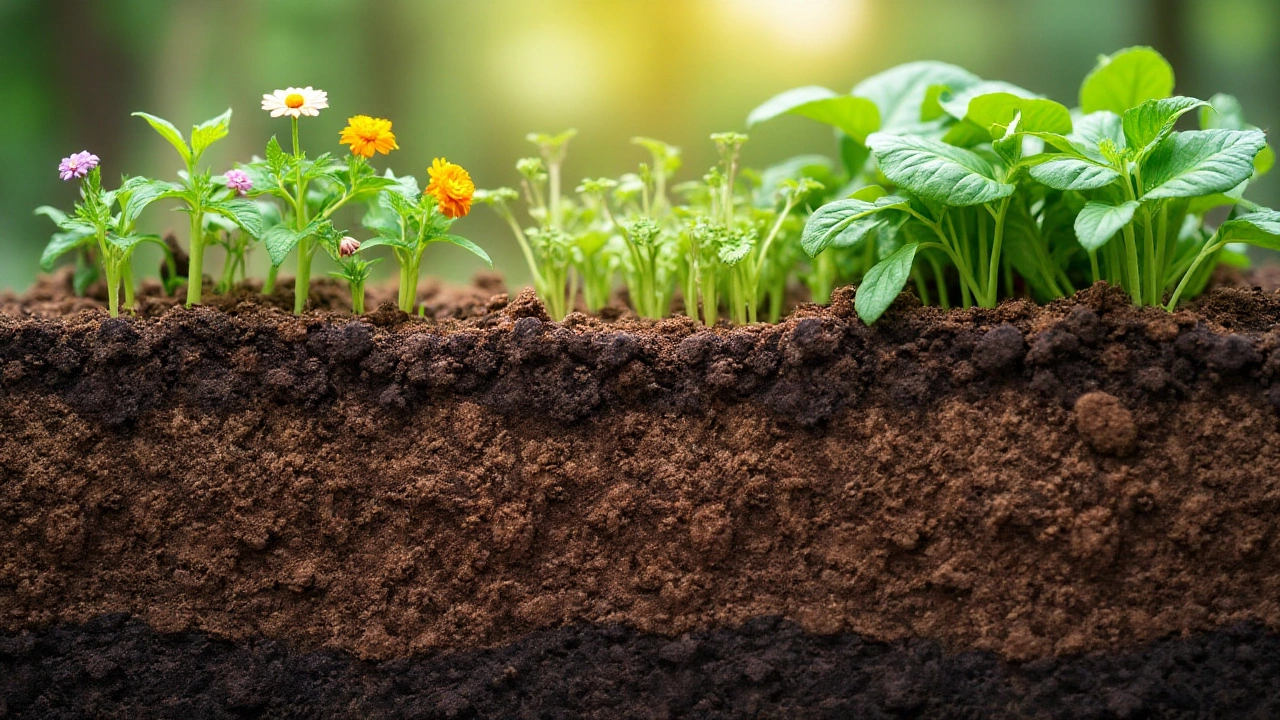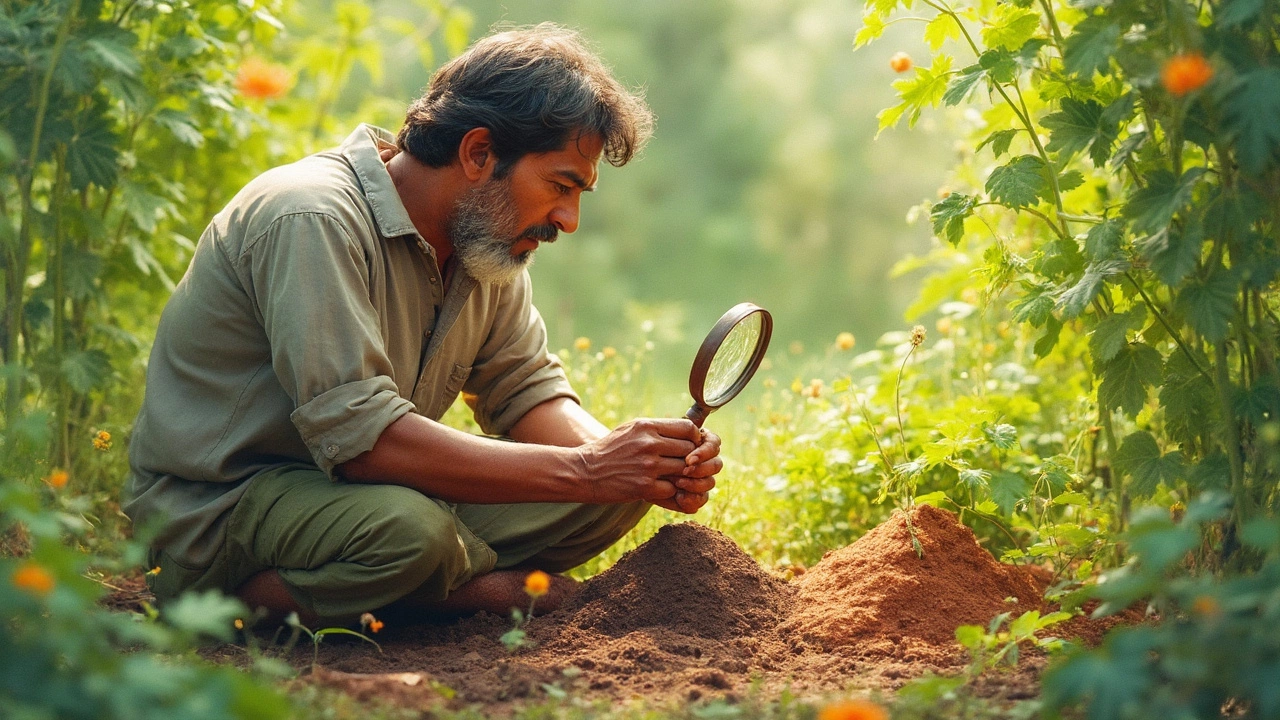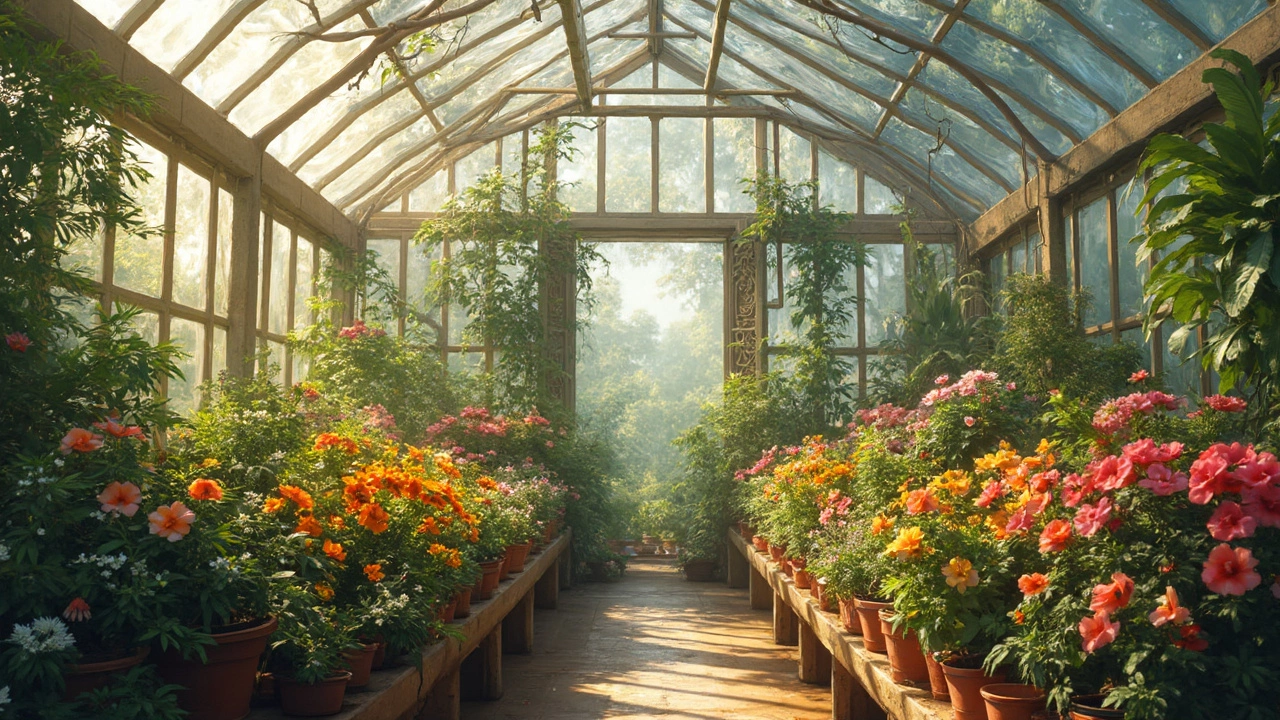Guide to Restoring and Improving Soil in Garden Beds

Healthy soil is at the heart of any thriving garden. The nutritional richness and structure of the soil can greatly influence plant life, so it's important to focus on improving soil that seems tired or unproductive. Restoring soil is not just about adding nutrients; it involves understanding what your garden bed truly needs and acting accordingly.
By knowing how to diagnose issues and implementing the right strategies, you can ensure your plants receive the best possible environment to grow. Strategies such as integrating organic materials, rotating crops, and using cover crops can greatly assist in this process.
This guide seeks to offer actionable tips and insights into the essentials of soil rehabilitation, transforming your garden into a lush haven of greenery once again.
- Understanding Soil Health
- Identifying Soil Problems
- Organic Matter and Composting
- Effective Soil Amendments
- Long-Term Soil Care Practices
Understanding Soil Health
The concept of soil health is as vast and intricate as the ecosystems it supports. At its core, soil health is about balance in the living ecosystem. Healthy soil is not just a medium in which plants grow; it's a living entity teeming with microorganisms that perform crucial ecosystem functions. These include decomposing organic matter, recycling nutrients, and forming symbiotic relationships with plant roots to enhance growth. Consider soil the bustling metropolis of the garden; myriad activities are constantly running below the surface, unseen yet vital. Understanding soil health demands a departure from the notion of dirt as inert. Instead, one must recognize it as a dynamic, self-sustaining environment crucial for vibrant plant life.
Indicators of soil health include physical, chemical, and biological elements. Physical aspects like texture and structure affect root penetration and water movement. Chemically, soil pH, nutrient levels, and existing minerals reflect its fertility. Biologically, a diverse community of organisms such as bacteria, fungi, insects, and worms indicates rich soil. Thriving soil can hold water efficiently, resist erosion, and sustain plant and microbial life. The complex interaction of these factors suggests why soil needs regular attention and care to maintain its vitality. A misconception among gardeners is focusing solely on chemical fertilizers to solve soil problems, but doing so neglects the biological dynamics crucial for soil productivity.
When embarking on the journey to rehab soil in a garden bed, understanding these facets is a fundamental step. An intriguing study by the Rodale Institute suggests that there are more microorganisms in a tablespoon of healthy soil than there are people on Earth. This illustrates the rich living web within seemingly simple soil. Additionally, understanding soil structure can address compaction issues that impede water infiltration, increasing runoff and reducing soil's natural resilience. A soil compaction problem mends over time with appropriate organic matter incorporation, improving both structure and drainage.
"Healthy soil is the real key to sustainable agriculture." – Dr. Rattan Lal, soil scientist and presidential laureate at the Ohio State University
To gauge the current state of your garden's soil health, employing soil tests can reveal vital information about nutrient availability and pH levels. Tests can pinpoint deficiencies that might affect plant health and productivity. Understanding test results can help tailor amendment strategies with greater precision, ensuring that resources are effectively utilized to restore a balance favorable to plant growth. Soil tests are an invaluable tool not only in addressing immediate problems but also in laying the groundwork for long-term soil fertility management.
Identifying Soil Problems
Recognizing issues with your garden soil is a critical step that precedes any intervention for soil improvement. Healthy soil is crucial to plant vitality, and finding what is lacking or troublesome is akin to understanding the symptoms before a treatment. A common method employed by gardeners to assess soil health is the visual inspection approach. This typically includes checking whether the soil is compacted or loose, visually assessing color, and observing whether water quickly drains away or tends to form pools. Dark, crumbly soil with lots of organic matter is usually ideal, but if it's a dull gray or excessively sandy, your plants might be in trouble.
Observing your plants can also give clues about soil health. If plants are showing yellowing leaves, wilting despite regular watering, or stunted growth, these can all be signs of poor soil quality. Testing the pH level is another essential diagnostic tool. Most plants prefer soil with a pH between 6.0 and 7.5. Extremes outside this range may indicate nutrient lock-up, which prevents roots from absorbing nutrients efficiently. Using a home test kit can often provide quick and easy insights into the pH and basic nutrient content of your soil.
Beware of Community Changes
In some cases, the presence of pests or fungal growth in soil can signal a deeper problem. Certain fungi form complex, beneficial relationships with plant roots, but others can cause significant harm. If you notice mushrooms or mold on the soil surface, delving deeper could reveal if the soil is retaining too much moisture. Pests, like grubs or root-feeding insects, might indicate underlying issues with soil texture or compaction. Garden soil improvement may sometimes require addressing these ecological imbalances.
If you're uncertain about what exactly is wrong, consider having a professional soil analysis conducted. This will provide a detailed breakdown of nutrient deficiencies, pH imbalances, and even a textural analysis. Such insights can guide targeted interventions to rejuvenate your garden beds. According to a report from the Soil Science Society of America, "Regularly testing your soil and recording changes can improve your ability to adapt beneficial soil amendments." These insights are invaluable as they empower gardeners to make informed decisions, rather than working through mere guesswork.
Pay Attention to Structure
An awareness of soil structure is also beneficial when diagnosing soil issues. Good soil structure is defined by its ability to form crumbs or aggregates which promote air and water movement while providing spaces for roots to grow. If clumps are too hard or if the environment feels like a single mass (such as clay), these conditions inhibit plant root growth and must be addressed. On the other hand, soils that crumble into dust can suggest organic matter depletion, often leading to inadequate water retention and nutrient holding capabilities. A quick test is to take a handful of moist soil and squeeze it; if it breaks apart with slight pressure, your soil structure may be optimal. If it holds together stubbornly or crumbles too easily, adjustments are necessary.
This comprehensive understanding of soil problems can equip you with the ability to tackle the root of garden challenges rather than only addressing surface symptoms. With informed observation and some targeted testing, anyone can progress toward ensuring their garden's beds are ready to unleash the vibrant growth lying just beneath the surface.

Organic Matter and Composting
Introducing organic matter to your garden bed is a foundational technique for rehab soil. Organic matter such as compost, wood chips, straw, and leaves acts both as a food source and structure improver for the soil. Decomposing organic matter feeds microorganisms, which in turn produce nutrients easily absorbed by plants. This natural cycle promotes a rich and balanced environment, enhancing both the fertility and texture of your soil.
Creating your own compost pile is a rewarding activity that not only recycles kitchen and garden waste but transforms these into a nutrient-rich additive for garden soil. To make effective compost, aim for a balanced mix. You need 'greens', like fruit scraps and coffee grounds, and 'browns', such as dried leaves and cardboard. Layer these components, maintaining a ratio close to 1:3 of greens to browns, ensuring a consistency that allows ample aeration and circulation of nutrients.
The temperature of your compost is an important element to monitor. It should ideally reach between 130-160 degrees Fahrenheit, as this encourages decomposition and kills off unwanted pathogens. Frequent turning of the pile aids in this process. Interestingly, according to the Environmental Protection Agency (EPA), "well-managed compost piles can speed up decomposition considerably."
”Composting diverts a significant portion of household waste from landfills, contributing to a sustainable waste management system.”
Incorporating finished compost into your garden beds not only adds vital nutrients but also improves water retention and drainage. A well-composted soil bed is less prone to compaction and supports healthy root systems, providing a nurturing medium for plant growth. When applying compost, spread it evenly over the surface up to two inches thick and gently integrate with a garden fork, avoiding deep tilling that might disturb the soil's natural horizons.
To fully realize the benefits of organic matter and composting, patience and observation are key. Notice how soil texture evolves and how plants respond. Such feedback guides adjustments, ensuring long-term vitality of your garden beds. In the end, composting is as much an art as it is a science, blending intuition with knowledge to foster environments that support thriving ecosystems.
Effective Soil Amendments
When it comes to revitalizing a garden bed, understanding which amendments enhance soil health is crucial. Soil amendments are materials added to the soil to improve its physical or chemical properties. These can range from natural organic substances to synthetic solutions. Each plays a vital role in helping your plants thrive by balancing nutrient content, improving soil texture, and fostering beneficial microbial activity. For instance, adding compost not only introduces essential nutrients but also enhances soil structure, making it more porous and facilitating root growth.
One of the most effective amendments is organic matter, such as decomposed leaves, plant residues, or well-maintained compost. This amendment enriches soil with humus, stimulates microorganism activity, and improves moisture retention. By increasing the organic content in soil, you create a hospitable environment for worms and insects that naturally aerate the earth. This is crucial as compacted soil often limits plant development. Additionally, organic matter needs consistent replenishment, especially in garden beds that are regularly cultivated. This ongoing process ensures that soil remains fertile and ready to support diverse plant life.
"Healthy soil, like healthy people, requires organic material," says Dr. John Reynolds, a prominent soil scientist. "It’s not just about feeding plants; it’s about feeding the soil community."Different types of soil require different amendments. Clay soil, known for its density, benefits greatly from gypsum – a calcium sulfate mineral that aids in breaking up compact soil particles. Sandy soil, on the other hand, tends to benefit from the addition of substances like peat moss, which help improve water retention. Amending your soil according to its unique needs is vital. It’s not a one-size-fits-all solution; it requires an understanding of the specific deficiencies your soil exhibits.
For those who want to opt for natural solutions, cover crops are an excellent choice. These crops, like clover or buckwheat, are grown during the off-season. They help fix nitrogen levels in the earth and can be tilled back into the soil to decompose, acting as a natural fertilizer. Moreover, adding lime can be critical for soils that are too acidic, tipping the pH scale towards a more neutral level, which most garden plants prefer.
Adding rock minerals is another strategy to consider for soil improvement. These minerals, such as greensand or basalt rock dust, replenish trace minerals that might be depleted over time. While it’s a slow-release option, it assures longevity in soil fertility, promoting healthy plant growth over subsequent seasons. Understanding the mineral composition of your garden bed can drastically influence the type and timing of amendments for the best results. The choice of amendment should always considered in relation to the plants you intend to grow.
To summarize, the key to successful soil amendment lies in understanding your soil and making informed choices. Strategic amendments enrich soil fertility, enhance plant health, and improve yield quality, contributing to a sustainable gardening practice. When executed correctly, these interventions transform a barren garden bed into a lush, thriving sanctuary.

Long-Term Soil Care Practices
When discussing the art of nurturing your garden beds to their fullest potential, it's crucial to focus on sustainable methods. Implementing long-term soil care practices is key to maintaining a vibrant and productive garden that will flourish year after year. Soil health is not a one-time investment, but a journey that requires perseverance and understanding. When considered carefully, these practices offer more than just a temporary surge in plant health; they ensure the soil's ability to consistently provide nutrients and moisture to your plants. One foundational practice involves rotating crops each season. By doing so, you not only prevent nutrient depletion but also disrupt pest cycles and build a more resilient garden ecosystem.
Another effective method is the strategic use of cover crops. These are non-commercial boots on the ground that protect your beds during the off-season. Notable examples include clover, vetch, or rye, which not only shield the soil from erosion but also contribute to its enrichment by fixing nitrogen and building organic matter. This process is especially beneficial for gravelly patches that need extra care. Harnessing organic fertilizers is another significant step in this nurturing journey. Products like bone meal or fish emulsion can be added periodically to replenish essential minerals in the soil without the risks associated with synthetic options. This not only boosts plant growth but also cultivates a healthy microbial environment, crucial for decomposing organic matter and cycling nutrients within the soil.
"Healthy soil is the foundation of healthy plants. It is life itself beneath our feet, unseen but vital." - Rachel Carson, Environmentalist.
Additionally, practicing no-till methods can have a remarkable effect on maintaining soil integrity and structure. This practice minimizes disturbance by leaving the soil layers intact, which helps in carbon storage, moisture retention, and preventing erosion. The no-till approach requires minimal intervention and, over time, this results in a rich tapestry of microorganisms working in harmony, aiding plant roots in absorbing nutrients and improving the garden beds. Mulching with organic materials adds another layer of complexity to soil care. Straw, wood chips, or grass clippings can keep the soil temperature stable, preserve moisture, and suppress weeds. As these materials break down, they contribute to the organic content within the soil, further improving soil structure and aeration.
Investing in the rehab soil journey is a rewarding endeavor. With these long-term practices, gardeners can look forward to thriving gardens where the soil and plants build a mutually beneficial relationship, enhancing each other's potential and producing vibrant blooms and bountiful harvests season after season.





